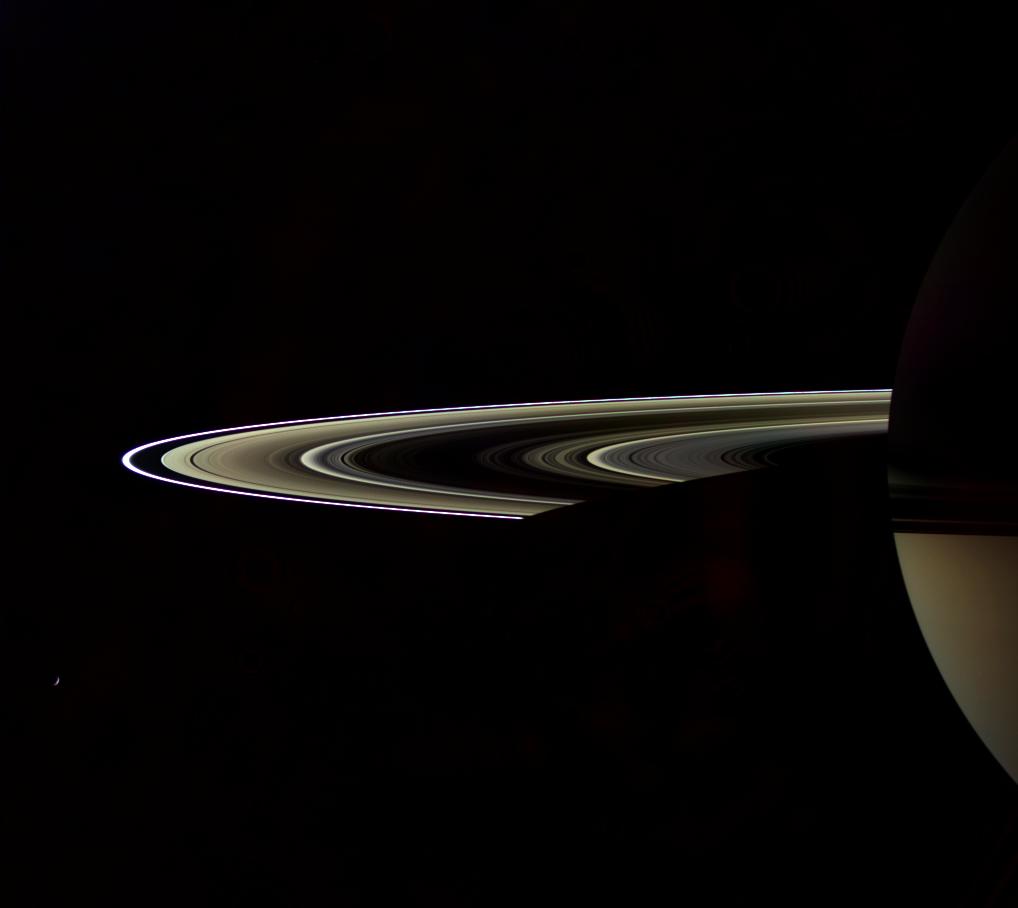The Color of Darkness

| PIA Number | PIA08282 |
|---|---|
| Language |
|
Sunlight filters through Saturn's rings in sepia tones in this artful view from the Cassini spacecraft of the dark side of the rings. Those rays from the sun directly reflected from the lit side of the rings onto the planet strike and illuminate the night-side southern hemisphere.
The densely populated B ring blocks much of the Sun's light and thus looks quite dark.
Tethys (1,071 kilometers, or 665 miles across) is a mere sliver below left.
Unprocessed wide-angle camera images taken in a high-phase viewing geometry generally contain stray light artifacts. These have largely been removed from this image by computer image processing.
Cassini was about 3 degrees above the ringplane when this image was obtained on Sept. 6, 2006. Images taken using red, green and blue spectral filters were combined to create this natural color view. The images were taken using the Cassini spacecraft wide-angle camera at a distance of approximately 1.8 million kilometers (1.1 million miles) from Saturn and at a Sun-Saturn-spacecraft, or phase, angle of 154 degrees. Image scale is 106 kilometers (66 miles) per pixel.
The Cassini-Huygens mission is a cooperative project of NASA, the European Space Agency and the Italian Space Agency. The Jet Propulsion Laboratory, a division of the California Institute of Technology in Pasadena, manages the mission for NASA's Science Mission Directorate, Washington, D.C. The Cassini orbiter and its two onboard cameras were designed, developed and assembled at JPL. The imaging operations center is based at the Space Science Institute in Boulder, Colo.
For more information about the Cassini-Huygens mission visit http://saturn.jpl.nasa.gov . The Cassini imaging team homepage is at http://ciclops.org .
Credit: NASA/JPL/Space Science Institute
